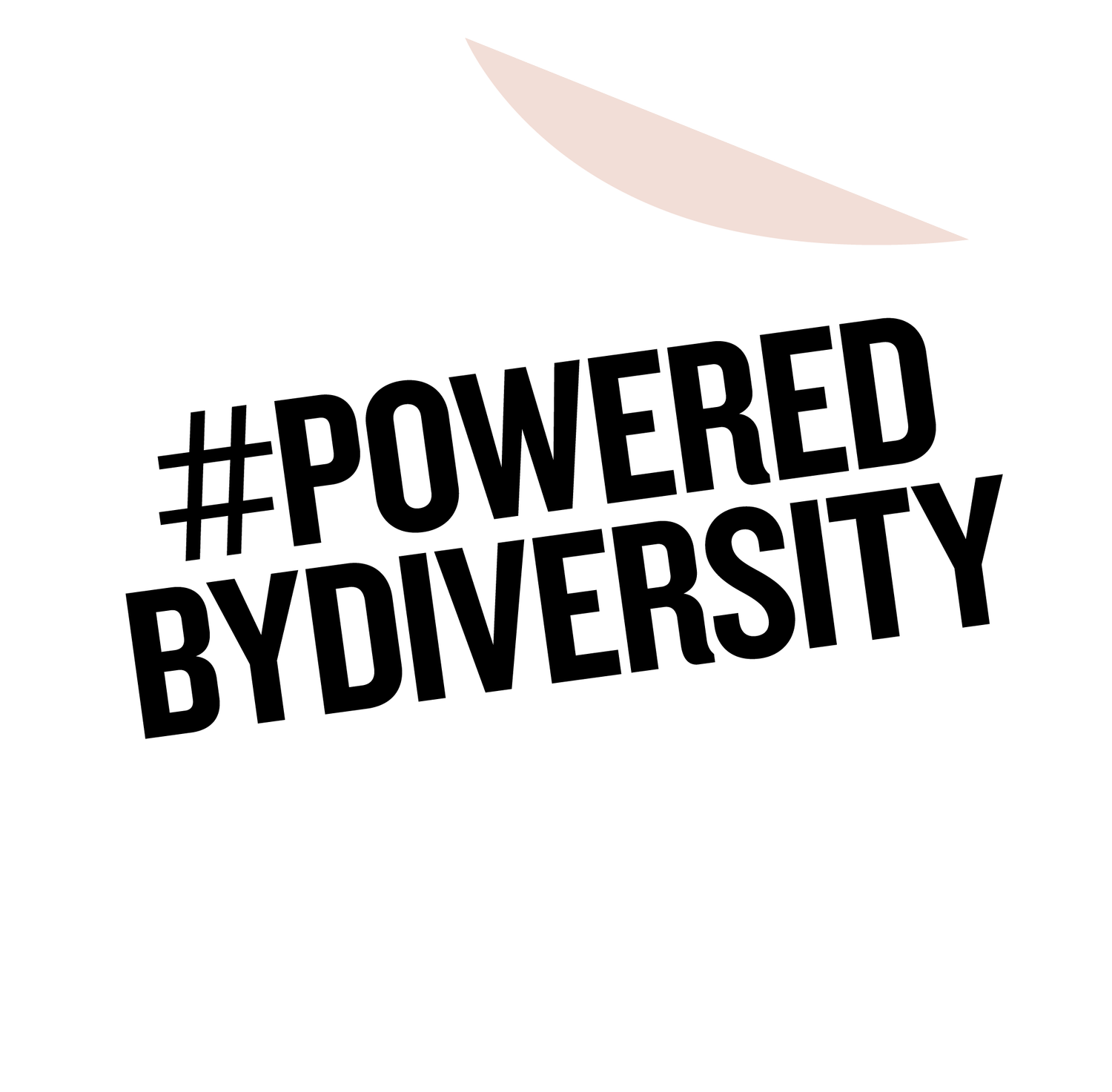Welcome to Equity, Diversity and Inclusion (EDI) Essentials!
Throughout this free resource we’re going to be referring to Equity/ Equality, Diversity and Inclusion as EDI.
If you prefer different terms like Diversity and Inclusion (D&I), Diversity, Equality and Inclusion (DE&I) or Justice, Equity, Diversity and Inclusion (JEDI) that's absolutely fine! Just make the substitution in your head as you go.
Equity, Diversity and Inclusion is all about variety, embracing different approaches - and the grey areas!
Embracing diversity means opening yourself up to a variety of differences. One of the main benefits of diversity is getting to hear and consider different thoughts, opinions, perspectives and ideas. So, think of this resource not as a set of strict rules to obey, rather as food for thought as you form your own points of view on each topic.
How you go forwards and 'do' EDI should feel completely authentic - and unique to you!
Introduction
Most people have heard of EDI but aren’t completely sure how it could benefit them.
In this free resource we’ll cover questions like What is Equity, Diversity and Inclusion (EDI)? - and How does Equity, Diversity and Inclusion actually help businesses? plus Am I Included in Equity, Diversity and Inclusion?
In this training we’ll cover some key terms and topics in EDI and provide and introduction to why EDI is important and how it can benefit everyone.
Here’s what’s included in this resource:
What is Diversity?
Is diversity always visible?
Why are Diversity and Inclusion talked about together?
What Is Equality?
What is Equity?
How do Inclusion and Belonging relate to each other?
What does belonging mean to people?
What does an inclusive culture feel like?
Getting Comfortable with Discomfort
Am I included in diversity?
1. What is Diversity?
Diversity means difference, or a range of differences.
In the world of EDI, “Diversity” is the range of human differences, and it often focuses in on protected characteristics like ethnicity and gender.
The range of diversity is enormous and true diversity work should include all differences that people bring.
2. Is diversity always visible?
Diversity is not just about visible differences. All of the ways people can differ, extends way beyond visible differences.
Consider the diagram below showing some of the ways people can be different from each other, both visibly and invisibly. In which ways are you different to your colleagues? Are your differences recognised in your workplace? Are they valued?
3. Why are Diversity and Inclusion talked about together?
Diversity often focuses on the differences between people and inclusion is the act of welcoming and encouraging that difference.
In order to unlock the benefits of Diversity and Inclusion you need a diverse workforce that feel like their opinion and input is valued and listened to, and where they all feel they belong. The act of “Inclusion” promotes creating an environment where all different kinds of people feel like they belong and can thrive and succeed.
It is possible to have a diverse company where people don’t feel included and it is also possible to have an inclusive company, which is not very diverse.
4. What Is Equality?
Equality in the context of EDI doesn't mean that everyone is the same and should be treated the same.
In EDI terms, “equality” is about ensuring that every individual has an equal opportunity to make the most of their lives and talents.
Some people take the word Equality literally and think that treating everyone the same is the purpose of EDI. It is absolutely not.
5. What is Equity?
Equity is fairness. Many have begun to use the term equity in place of equality in EDI terms, so in this case EDI might mean Equity, Diversity and Inclusion.
Equity is used to illustrate that when the playing field is not level, treating people the same - or equally - is not always fair.
Equity or Equality Exercise
Consider the information about a job below. For each new piece of information, consider what is equal (treating everyone the same) and what is equitable (treating people fairly).
Think about real-life situations today where the statements below may still be the case (either overtly or covertly) - and think about which groups might (or will) face inequity and inequality in each scenario.
An interview is to be held for a position. Anyone is allowed to come to the interview, regardless of age, parental status, disability, education, race, religion, orientation, sex or gender identity. - Is this Equal? - Is this Equitable?
To get to the interview, all candidates must ascend a flight of stairs. - Is this Equal? - Is this Equitable?
The successful candidate must be able to intern for free for the first three months in the role. - Is this Equal? - Is this Equitable?
The successful candidate will need to work shifts both day and night. They will receive notification of their shifts a week in advance. - Is this Equal? - Is this Equitable?
If there are no shifts available in a given period, the candidate will not work and will not get paid. - Is this Equal? - Is this Equitable?
To get the job, the candidate must be considered physically attractive by the interviewers.- Is this Equal? - Is this Equitable?
All of the interviewers are white. - Is this Equal? - Is this Equitable?
All of the interviewers are male. - Is this Equal? - Is this Equitable?
All of the interviewers have attended private school and university. - Is this Equal? Is this Equitable?
6. How do Inclusion and Belonging relate to each other?
Inclusion is the invitation, the open door, the platform for participation.
Belonging is the resulting feeling that inclusion efforts can create in employees. Belonging is a feeling of being genuinely welcome, valued, and part of the team.
Have a read through some of the ways people have described what it feels like to belong in the next section.
7. What does belonging mean to people?
“Belonging feels like being able to be your whole, true self at work and not only being accepted for it - but celebrated and valued for it!”
“Belonging for me is a feeling of adding value and being able to speak up and put forth ideas without any fear.”
“For me it’s about being remembered, invited, asked for my opinion, consulted, considered and not left out.”
“Belonging is knowing someone has thought about my needs, considered my feelings before acting, asked for my point of view before deciding and viewed my input as important.”
“Feeling like I belong is not having to “cover” or be less than or different to how I would be outside of work. It’s not changing the way I speak, dress or do my hair to “fit in”.
8. What does an inclusive culture feel like?
An inclusive culture is an environment which is purposeful in being inclusive. An inclusive culture is one where every aspect of the organisation has been looked at through different lenses - and has been shaped and adapted by virtue of having many different people inputting into the design of it!
How does an inclusive culture feel? It feels a lot like belonging!
“Here I don’t feel like I need to hide my sexuality or my relationship, my gender identity, my religion or any other part of my identity.”
“I can talk about what’s important to me, my family, my hobbies and interests - even though they are totally different to other people’s.”
“Here I feel belonging because I feel like they value me because of my differences - not in spite of them”
Having read those statements about what belonging feels like, it’s easy to see how inclusion is important to a productive, motivated workforce that wants to stay with the company.
An inclusive culture doesn’t happen overnight and requires planning, thought and cultivation, but in order to get the best out of people, it’s crucial that they feel included.
9. Getting Comfortable with Discomfort
It’s impossible to talk about EDI without also addressing discrimination, bias and prejudice.
It’s also impossible to have personally experienced being on the receiving end of every possible act of bias, discrimination and prejudice.
When we haven’t personally experienced being on the receiving end of an act of bias, discrimination or prejudice, learning about them can feel uncomfortable.
If you are learning properly you should be confronting your own biases and prejudices, which can be an uncomfortable experience.
10. Am I included in diversity?
Diversity means difference and we are all different! So yes, you are included in diversity.
Equity, Diversity and Inclusion work shouldn’t exclude anyone.
There will be times when one group is the main focus, for example on Cultural Calendar days (like Black History Month or Pride) where there is an awareness raising exercise about a certain group or issue that affects them.
There may also be groups in your workplace with specific focuses, like Women in Tech. More often than not these groups are open to allies and those wanting to join in.
Like what we do?
For more help with Diversity and Inclusion or to chat to us about training, running an EDI Diagnostic or organising some live EDI events, please contact us via cat@poweredbydiversity.org or by filling in the form below:



